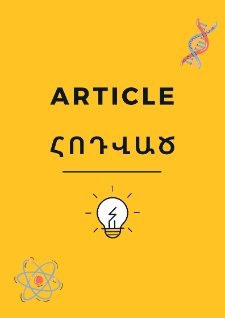Object
Title: First Principles of the Classical Mechanics and the Foundations of Statistical Mechanics on the Example of a Disordered Spin System
Co-author(s) :
Abstract:
We study the classical multicomponent disordered 3D spin system taking into account the temperature of the medium in the framework of the model of nearest neighbors. The latter allows the 3D problem with a cubic lattice to reduce to the 1D Heisenberg spin glass problem with a random environment. Using the Hamilton equations of motion, a recurrent equation is obtained that connects three spins in successive nodes of 1D lattice, taking into account the influence of a random environment. This equation, together with the corresponding conditions of a local minimum energy in nodes, allows to construct node-by-node a stable spin chains and, accordingly, to calculate all parameters of statistical ensemble from the first principles of classical mechanics, without using any additional assumptions, in particular, the main axiom of statistical mechanics – the equiprobability of statistical states. Using the example of 1D Heisenberg spin glass model, the features of the new approach are studied in detail and the statistical mechanics of the system are constructed without using the standard representation of the partition function (PF).
Publisher:
Date submitted:
Date accepted:
Date modified:
Date of publication:
Identifier:
oai:noad.sci.am:136092
DOI:
Language:
Journal or Publication Title:
Journal of Contemporary Physics
Volume:
Number:
URL:
Affiliation:
Institute for Informatics and Automation Problems, NAS of Armenia, Yerevan, Armenia ; Institute of Chemical Physics, NAS of Armenia, Yerevan, Armenia
Year:
References:
Popescu, S., Short, A.J., and Winter, A., Nature Physics, 2006, vol. 2, p. 754. ; Binder, K. and Young, A., Rev. Mod. Phys., 1986, vol. 58, p. 801. ; Mezard, M., Parisi, G., and Virasoro, M., Spin Glass Theory and Beyond, World Scientific, 1987. ; Young., A., Spin Glasses and Random Fields, World Scientific, 1998. ; Fisch, R. and Harris, A., Phys. Rev. Let., 1981, vol. 47, p. 620. ; Ancona-Torres, C. et al., Phys. Rev. Let., 2008, vol. 101, no. 5, p. 057 201. ; Bovier, A., Statistical Mechanics of Disordered Systems: A Mathematical Perspective, Cambridge Series in Statistical and Probabilistic Mathematics, Cambridge: Cambridge University Press, 2006. ; Tu, Y., Tersoff, J., and Grinstein, G., Phys. Rev. Let., 1998, vol. 81, p. 2490. ; Chary, K. and Govil, G., NMR in Biological Systems: From Molecules to Human, Springer, 2008. ; Baake, E., Baake, M. and Wagner, H., Phys. Rev. Let., 1997, vol. 78, p. 559. ; Gevorkyan, A.S. and Abajyan, H.G., Physics of Particles and Nuclei Letters, 2012, vol. 9, p. 530. ; Liers, F. et al., Phys. Rev. B, 2003, vol. 68, p. 094 406. ; Angles, J.C. et al., Mathl. Comput. Modeling, 1997, vol. 26, no. 8–10, p. l. ; Papadimitriou, C., Computational Complexity. (1st Ed.). Addison-Wesley, Section 2.7, 1993. ; Lewis, H.R. and Papadimitriou, C., Elements of the Theory of Computation. (1st Ed.). Prentice-Hall. Section 4.6, 1981. ; Metropolis, N. et al., J. Chem. Phys., 1953, vol. 21, p. 1087. ; Hayes, B., Am. Scient., 1997, vol. 85, p. 108. ; Monasson, R. et al., Nature (London), 1999, vol. 400, p. 133. ; Dubois, O., Monasson, R., Selman, B., and Zecchina, R., Theoretical Computer Science, 2001, vol. 265, p. 3. ; Alava, M.J. et al., InPhase Transitions and Critical Phenomena, Ed. by Domb, C. and Lebowitz, J., New York: Academic Press, 2001. ; Hartmann, A.K. and Rieger, H., Optimization Algorithms in Physics, Berlin: While-VCH, 2001. ; Thompson, C.J., Phase Transitions and Critical Phenomena, Academic Press, 1972, vol. 1, p. 177. ; Gevorkyan, A.S. and Sahakyan, V.V., Phys. Atomic Nuclei, 2017, vol. 80, no. 2, p. 366. ; Dagotto, E. and Moreo, A., Phys. Rev. Lett., 1989, vol. 63, p. 2148. ; Manousakis, E., Rev. Mod. Phys., 1991, vol. 63, p. 1. ; Rosner, H., Singh, R.R.P., Zheng, W.H., Oitmaa, J., and Pickett, W.E., Phys. Rev. B, 2003, vol. 67, p. 014 416. ; Sirker, J., Weihong, Z., Sushkov, O.P., and Oitmaa, J., Phys. Rev. B, 2006, vol. 73, p. 184 420. ; Wen, H.H., Mu, G., Fang, L., Yang, H., and Zhu, X., Europhys. Lett., 2008, vol. 82, p. 17 009. ; Rotter, M., Tegel, M., and Johrendt, D., Phys. Rev. Lett., 2008, vol. 101, p. 107 006. ; Schmidt, R., Schulenburg, J., Richter, J., and Betts, D.D., Phys. Rev. B, 2002, vol. 66, p. 224406. ; Oitmaa, J. and Zheng, W., Phys. Rev. B, 2004, vol. 69, p. 064 416. ; Majumdar, K. and Datta, T., J. Phys.: Condens. Matter, 2009, vol. 21, p. 406004. ; Pantic, M.R., Kapor, D.V., Radosevic, S.M., and Mali, P.M., Sol. St. Comm., 2014, vol. 182, p. 55. ; Richter, J., Muller, P., Lohmann, A., and Schmidt, H.-J., Phys. Proc., 2015, vol. 75, p. 813. ; Muller, P., Richter, J., Hauser, A., and Ihle, D., Eur. Phys. J. B, 2015, vol. 88, p. 159. ; Farnell, D.J.J. et al., Phys. Rev. B, 2016, vol. 93, p. 235 123; Mi, B.-Z., Sol. St. Comm., 2016, vol. 239, p. 20. ; Mi, B.-Z., Sol. St. Comm., 2017, vol. 251, p. 79. ; Whittaker, E.T., A Treatise on the Analytical Dynamicals of Particles and Rigid Bodies. With an Introduction to the Problem of Three Bodies, Cambridge University Press, 1988. ; Kolmogorov, A.N., IEEE Transactions on Information Theory, 1968, vol. 14, no. 5, p. 662. ; Li, M. and Vitányi, P., An introduction to Kolmogorov complexity and its applications, New York: Springer-Verlag, 1997. ; Korenblit, I.Ya. and Shender, E.F., Sov. Phys. Usp., 1989, vol. 32 p. 139.
Indexing:
Object collections:
- Digital Library > Academic Insitutions > Insitute for Informatics and Automation Problems of NAS RA > Publications
Last modified:
Apr 23, 2021
In our library since:
Apr 15, 2021
Number of object content hits:
125
All available object's versions:
https://noad.sci.am/publication/149751





